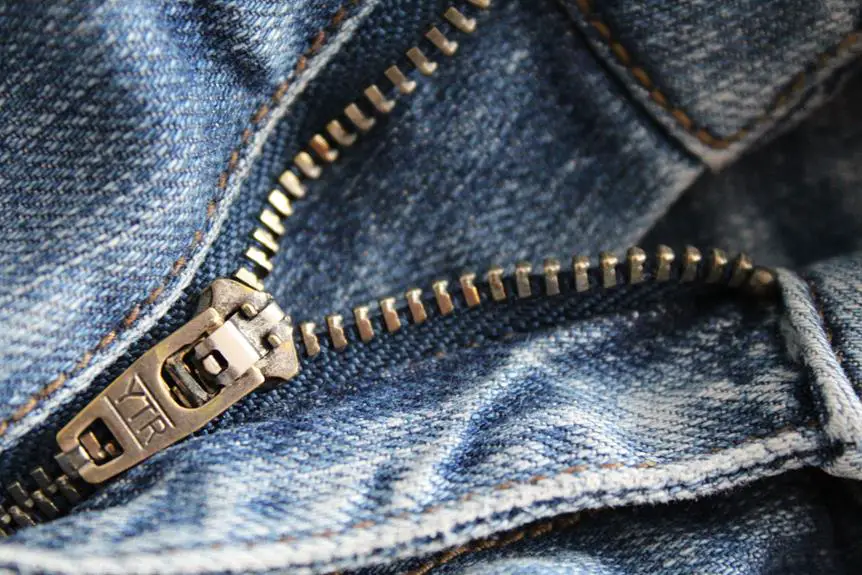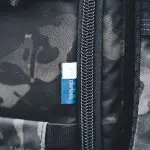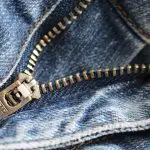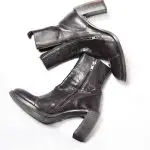When it comes to choosing a zipper fabric for your project, the options are as diverse as a rainbow. Each type has its own strengths and best uses.
Understanding the characteristics of metal zippers, nylon coil zippers, plastic molded zippers, invisible zippers, brass zippers, water-resistant zippers, two-way separating zippers, and decorative zippers can help you make the right choice.
In this guide, we'll explore the features of each zipper fabric option and provide insights to help you determine which one is best suited for your specific project.
Key Takeaways
- Metal zippers, such as brass zippers, provide durability, strength, and a classic look, making them ideal for heavy-duty jackets, bags, and outdoor gear.
- Nylon coil zippers are highly flexible, lightweight, and resilient, making them suitable for frequent use and harsh conditions. They also offer a wide range of colors for customization.
- Plastic molded zippers offer high tensile strength, flexibility without losing shape, and reliable closure even under stress. They are suitable for curved or flexible applications.
- Water-resistant zippers, made from materials like nylon or polyurethane with weather-resistant coatings or laminates, provide protection against moisture and are versatile and durable, making them ideal for outdoor gear.
Metal Zippers
When choosing a zipper for your project, consider using metal zippers for their durability and strength. Metal zippers are known for being heavy duty and rust resistant, making them an excellent choice for items that will be subjected to frequent use or harsh conditions. These zippers are often found in heavy-duty jackets, bags, and outdoor gear where reliability is crucial. The metal teeth of these zippers make them less prone to damage from regular wear and tear compared to their plastic counterparts. Additionally, the sturdiness of metal zippers ensures that they can withstand greater tension without breaking or getting stuck, providing a smooth and reliable closure for your project.
If you're working on a project that requires a zipper to endure tough conditions and maintain its functionality over time, a metal zipper is an ideal choice. Their resilience and strength make them a popular option for various applications where a dependable closure is essential. When selecting a zipper for heavy-duty items, the rust-resistant and durable nature of metal zippers makes them a reliable choice for ensuring the longevity and functionality of your project.
Nylon Coil Zippers
Consider using nylon coil zippers for their flexibility and lightweight design, providing a smooth closure while enduring frequent use or harsh conditions. Nylon coil zippers offer several features that make them suitable for various zipper application techniques. Here are some reasons why nylon coil zippers might be the best choice for your project:
- Flexibility: Nylon coil zippers are highly flexible, making them suitable for curved or flexible applications such as clothing and bags.
- Lightweight Design: The lightweight nature of nylon coil zippers makes them ideal for projects where weight is a concern, such as outdoor gear or lightweight garments.
- Smooth Closure: These zippers provide a smooth closure, ensuring ease of use and durability over time.
- Endurance: Nylon coil zippers are resilient and can withstand frequent use and harsh conditions, making them suitable for outdoor and active wear.
- Variety of Colors: Nylon coil zippers come in a wide range of colors, allowing for easy customization and coordination with your project.
When considering zipper options, keep in mind the features of nylon coil zippers and how they align with your project's specific needs.
Plastic Molded Zippers
For achieving a sturdy closure and enhanced durability in your projects, consider utilizing plastic molded zippers. Plastic molded zippers are known for their strength and flexibility, making them ideal for a wide range of applications. Here's a comparison table to help you understand the key characteristics of plastic molded zippers:
| Feature | Description | Benefits |
|---|---|---|
| Zipper Strength | Made from durable molded plastic, these zippers offer high tensile strength and can withstand heavy use without breaking or warping. | Provides reliable closure even under stress. |
| Zipper Flexibility | The plastic material allows the zipper to flex without losing its shape, making it suitable for curved or flexible applications such as garments, bags, and outdoor gear. | Offers smooth operation and adapts to various fabric movements. |
When choosing a zipper for your project, prioritize the desired level of strength and flexibility. Plastic molded zippers are an excellent choice for applications where reliability and adaptability are crucial.
Invisible Zippers
If you're looking for a sleek and discreet closure for your project, invisible zippers may be the perfect choice. These zippers are designed to be hidden within the seam, creating a seamless and polished look.
Sewing invisible zippers requires precision and attention to detail, but the end result is a professional and clean finish for your garments or home decor items.
Invisible Zipper Advantages
Choosing an invisible zipper offers several advantages for achieving a sleek and seamless closure in your sewing projects. Here are the benefits of using an invisible zipper:
- Professional Finish: Invisible zippers provide a clean and polished look, enhancing the overall appearance of your garment.
- Inconspicuous: As the name suggests, these zippers are nearly invisible, creating a seamless and uninterrupted fabric surface.
- Ease of Use: With the right zipper installation and sewing techniques, invisible zippers are relatively easy to insert, even for beginners.
- Versatility: They work well with various fabric types, from delicate materials to heavy-duty fabrics.
- Minimal Maintenance: Once installed properly, invisible zippers require minimal maintenance and care, making them a convenient choice for long-lasting projects.
Sewing Invisible Zippers
When sewing invisible zippers, you'll frequently find that the process becomes smoother with practice and experience. The key to mastering invisible zipper installation lies in precise sewing techniques.
Begin by ironing the zipper tape to ensure it lies flat and straight. Pin the zipper tape to the fabric, aligning the zipper teeth with the fabric edge. Use an invisible zipper foot on your sewing machine, which helps in stitching close to the zipper teeth.
Sew one side of the zipper tape, then the other, adjusting the fabric as needed. After sewing, use an invisible zipper slider to open and close the zipper to ensure it functions smoothly.
With consistent practice and attention to detail, mastering the art of sewing invisible zippers is well within reach.
Brass Zippers
Considering durability and style, selecting brass zippers for your project can provide a timeless and sturdy closure option. Brass zippers are known for their exceptional durability, making them suitable for heavy-duty use. Additionally, they offer various customization options, allowing you to match the zipper color and style with your project.
Here are some key points to consider when choosing brass zippers:
- Durability: Brass zippers are highly durable and can withstand frequent use without compromising functionality.
- Style: The classic look of brass zippers adds a touch of elegance to your project, making them a stylish choice for various applications.
- Customization: Brass zippers can be customized in terms of color, size, and style, offering flexibility to suit your specific project requirements.
- Corrosion resistance: Brass zippers are resistant to corrosion, ensuring longevity and reliability, especially in outdoor or marine applications.
- Strength: The sturdy construction of brass zippers makes them ideal for heavy fabrics and items that require a strong closure.
When choosing a zipper for your project, brass zippers offer a blend of durability, style, and customization options, making them an excellent choice for a wide range of applications.
Water-Resistant Zippers
Looking for zippers that can withstand the elements?
Water-resistant zippers are ideal for outdoor gear, offering protection against moisture and ensuring your belongings stay dry.
These zippers are versatile and durable, making them a great choice for a wide range of projects where protection from the elements is a priority.
Ideal Outdoor Gear
For outdoor gear projects, you'll want to use water-resistant zippers to ensure durability and protection in wet conditions.
When selecting zippers for your outdoor gear, consider the following factors:
- Material Durability: Look for zippers made from durable materials such as nylon or polyurethane, which can withstand the rigors of outdoor use.
- Weather Resistance: Opt for zippers with weather-resistant coatings or laminates to protect your gear from rain, snow, and moisture.
- Smooth Operation: Choose zippers that operate smoothly even in harsh outdoor environments, ensuring reliable functionality.
- Corrosion Resistance: Select zippers with corrosion-resistant features to withstand exposure to saltwater and humidity.
- Sealed Construction: Seek zippers with sealed construction to prevent water penetration and maintain the integrity of your outdoor gear.
Versatile and Durable
When choosing zippers for your project, prioritize water-resistant options for versatility and durability in various conditions. Look for zippers with high fabric strength to ensure they can withstand the rigors of outdoor use.
Water-resistant zippers are available in various color options, allowing you to choose the best match for your project. Additionally, consider zipper customization to meet specific requirements, such as length and pull style.
Proper zipper maintenance is essential to ensure their longevity and performance. Regularly clean the zippers and lubricate them with a specialized zipper lubricant to prevent corrosion and maintain smooth operation.
Two-Way Separating Zippers
Consider using two-way separating zippers for projects that require versatility in opening and closing from both ends. These zippers are ideal for items like jackets, coats, and bags, where you may need to adjust the opening at either end.
Here are some key points to keep in mind when considering two-way separating zippers:
- Versatility: Two-way separating zippers offer the flexibility to open from the top or bottom, providing convenience and ease of use.
- Customizable Sliders: These zippers often come with customizable sliders, allowing you to choose the type of pull tab that best suits your project.
- Durability: Look for zippers made from high-quality materials to ensure durability and longevity, especially if the item will undergo frequent opening and closing.
- Maintenance: Regular zipper maintenance is crucial to ensure smooth functionality. Keep the zipper clean and lubricated to prevent jamming or sticking.
- Color Options: Two-way separating zippers are available in a variety of colors, making it easier to find the perfect match for your project.
When selecting zippers for your next project, consider the benefits of two-way separating zippers to achieve the functionality and style you desire.
Decorative Zippers
Choose a unique decorative zipper to add flair and personality to your project. Decorative zippers come in a variety of custom designs that can elevate the aesthetic appeal of your garment or accessory. When selecting decorative zippers, it's essential to consider the fashion trends and the overall style you want to achieve. Whether you opt for metallic, rhinestone-embellished, or lace-trimmed zippers, each choice can make a statement and enhance the visual appeal of your creation.
Custom designs for decorative zippers have become increasingly popular, allowing you to tailor the zipper to perfectly complement your project. From intricate patterns to bold colors, there are numerous options to explore, ensuring that you find the ideal decorative zipper to match your vision. Be mindful of the functionality of the zipper as well, ensuring that it not only looks stylish but also serves its practical purpose.
Incorporating decorative zippers into your project can be a creative way to demonstrate your attention to detail and sense of style. Stay informed about the latest fashion trends and consider how decorative zippers can contribute to the overall design of your creation.
Frequently Asked Questions
Are There Any Environmentally-Friendly Options for Zipper Fabric Materials?
Looking for environmentally-friendly options for zipper fabric? Consider eco-friendly materials like organic cotton, recycled polyester, or bamboo. Sustainable alternatives offer durability and reduce environmental impact. Choose fabrics that align with your project's eco-conscious goals.
What Are the Best Practices for Caring for and Maintaining Different Types of Zipper Fabric?
To keep your zipper fabric in top condition, follow these caring techniques and maintenance tips. Regularly clean with mild soap and water, avoid excessive heat, and store properly. For metal zippers, keep them dry to prevent rust.
Can Different Types of Zipper Fabric Be Used Interchangeably in a Project, or Are There Specific Considerations to Keep in Mind?
You can use different types of zipper fabric interchangeably in a project, but specific considerations are key. Prioritize fabric sustainability and eco-friendly materials. Keep project requirements in mind when choosing the best option for your project.
Are There Any Specific Considerations for Using Zipper Fabric in Outdoor or Heavy-Duty Projects?
When using zipper fabric in outdoor or heavy-duty projects, consider outdoor durability and heavy-duty applications. Look for fabrics with water resistance, UV protection, and high tensile strength to ensure longevity and reliability.
What Are Some Creative Ways to Incorporate Decorative Zippers Into a Project?
When incorporating zippers into creative projects, upcycling zippers for home decor can add a unique touch. Consider using zippers as trim on throw pillows, as accents on curtains, or even as a decorative element on lampshades.
- A Guide to Buying Percale Sheets on Ebay: What to Look for - July 15, 2025
- Does Percale Attract Pet Hair? A Guide for Pet Owners - July 15, 2025
- Does a Coffee Percolator Need Filters? A Common Question Answered - July 15, 2025







